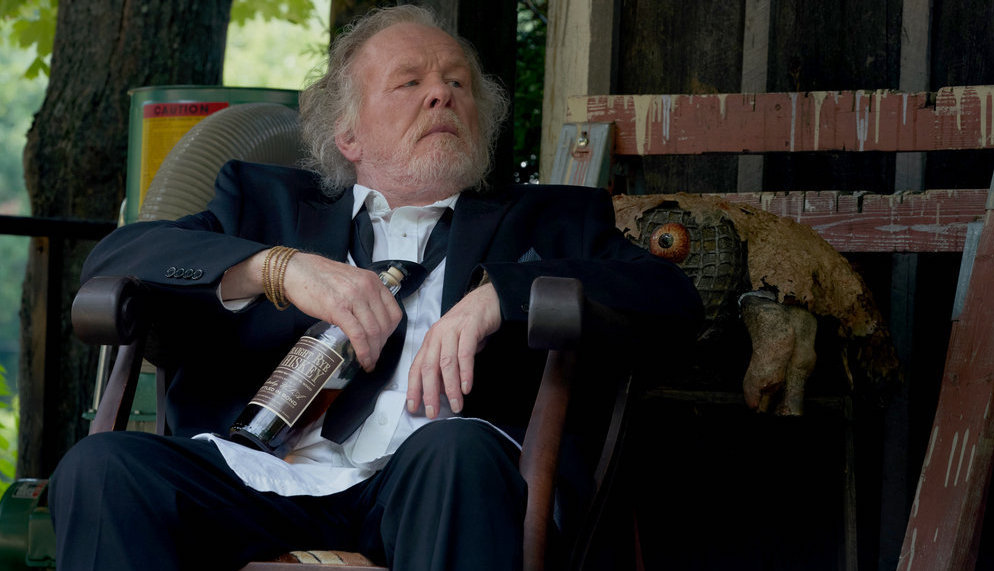“Poker Face” Editor Shaheed Qaasim on Cutting Rian Johnson’s Ambitiously Clever Crime Drama
In the Peacock murder mystery series Poker Face, star Natasha Lyonne drifts across the country as Charlie Cale, an itinerant human lie detector who unexpectedly solves a new homicide each week. No single Poker Face story is like any other. And provoked by malice, rage, or envy, neither are the murders. “We really treated each episode as its own independent movie,” explained editor Shaheed Qaasim (Modern Family, Future Man), who edited the series’ third, fifth, and eighth installments, setting the pace for three completely different worlds.
A feud over the future of a barbecue joint sparks a not-quite-clever-enough murder in scenic rural Texas in “The Stall.” A pair of aging, aggressive, but also fairly funny hippies open Charlie’s eyes to the unusual possibility of nursing home homicide in “Time of the Monkey.” And in “The Orpheus Syndrome,” Qaasim edited the meta setup of a murder tucked away in unedited film footage, culminating in a perpetrator’s meltdown told through stop-motion animation. “A lot of times in television, you’re somewhat limited to the visual language or scope of the show,” the editor said. “But for us, Charlie Cale was our anchor, and outside of that, I had the opportunity to cut and edit a show that best suits that episode and that story and those characters.”
The series is noteworthy for its elegant pacing (in addition to his years in the industry, Qaasim also has a background in competitive swing dancing, which he credits as a unique influence when it comes to creating rhythm and timing). It’s also unusual in that each episode introduces a new set of characters, with gruff, wise-cracking Charlie, the story’s lone constant, only appearing later on. We spoke with Qaasim about the challenge this presents in the editing suite, as well as how Poker Face relied on cinematic details, stop-motion animation, and comedy beats to give audiences a fresh take on the classic crime drama.
Predicated on a murder covered up during a podcast, the season’s third episode is particularly emotional, and you get a lot of that from well-placed close-ups. How did you approach those moments?
One of the things that’s unique about the story structure is that we don’t really see our star, Charlie Cale, until the second act. We introduce the characters we’re going to live with and the murder sequence in the first act. It’s a little bit challenging to get the audience to empathize and connect with these characters prior to having our star arrive. So that’s an area where we work really hard. Something that I do is utilize close-ups and very specific moments when you really want to land an emotional beat. A higher level of editing, to me, is not thinking about what you’re showing but thinking about what you’re not showing. That’s what you’re seeing when you notice these close-ups and inserts. I’m holding off on close-ups of these great characters until a very specific time within the scene, and it’s usually the biggest story beat in the scene.
Can you tell us about editing the moment Taffy dispatches with George during a pre-recorded radio episode? It tells so much in a short amount of time.
That was one of my favorite sequences to cut. The detail and the care that goes into the show is one of the things I think people love so much about it. There are all these tiny pieces that we put in place for the audience so that when we get to the second act of the show, and we’re hanging out with our hero, Charlie Cale, and she starts to unravel this mystery, if we’ve done a good enough job in the beginning, filling in the audience with all the information that they need, it becomes extremely rewarding when we start seeing these tiny little pieces unravel — the smell of the wood, and that he had the microphone muted.
We also get a lot of really beautiful establishing shots in this episode. How much creative license did you get to piece those in?
That particular episode was a combination of the director, Iain MacDonald, Jaron Presant, the DP, and me, because, as you notice when you watch the episode, one of the first shots in the first sequence was a long panning shot of George walking across the field at dusk. And that cinematic feel is one of the things that I think is attractive about the show and why it’s captivating audiences. We get the opportunity, because we work with directors like Rian Johnson, to sit in a shot that long. And even though it was a really nice long panning shot of a dude walking across a field, that shot also creates a bit of a hook because we’re like, what’s happening? Why are we looking at this guy? One of the nice things we do as editors is pace and timing and tempo, and that’s an opportunity to use and stretch out time to create a hook so we can create a more intense moment later in the scene.
Moving onto the geriatric murders of Episode 5 — this episode is very funny. Did you feel the editing was able to play into the comedy?
Absolutely. I spent many hours in the cutting room on Modern Family, which is a very funny show, so I think I’ve been well-versed in comedy. For me, comedy is all about timing. One of the moments that I actually quite love in this show — which I find to be a comedy beat, but I know people react to it quite differently — is when Joyce and Irene are telling their story about this guy we see them kill. He reveals to them that he was a rat for the FBI, and he gave them up, ultimately causing Irene the use of her legs because she got shot in the back by a bunch of agents. We play this song as he’s telling this story, and the moment where we reveal he was actually a rat and not this person they were in love with, we cut the music really hard and cut to their faces, and they’re just standing there, frozen. It’s one of my favorite moments on the show. It always got a really strong laugh in the room because it’s so shocking and jarring and unexpected. And that’s one of the joys of having so much experience in comedy, learning these different ways of executing a joke.
As an editor, how do you approach an episode like this, which relies on getting flashbacks right to convey the story?
It’s always really tricky to do flashbacks. That was one that took a lot of different versions in the edit. We had a good amount of footage there, so we could have played a really long, elaborate flashback story if we wanted to. But we decided to play a more condensed story because it was better for the pace of the episode and served the characters better. I’m going to go back to episode three to give an example — we have this dog that’s kind of an a-hole dog. He’s barking, he’s being a jerk. I have people coming up to tell me how funny the dog was. We had to tune the perfect frequency of the dog. There was a point he wasn’t barking enough, and then we did a bunch of barking, and it was annoying. Once we got that perfect frequency, everyone just started laughing. That’s how I look at the flashbacks. Sometimes it’s really a fine-tune thing you have to play around with in the edit. In the case of episode five, I think we found the right frequency for that.
And then we have episode eight, which utilizes stop-motion animation and is a complete departure in tone from the others.
That was directed, written by, and starred Natasha Lyonne. It was quite an epic experience for me to not only work with a writer-director but work with someone who had starred in the episode, too. Without having the right word for it, it’s a very vibey episode. The Nick Nolte character, the monster creator, we kind of modeled off of Phil Tippett, who did a lot of creature effects in Star Wars and many other movies. He was doing stop-motion animation, and as Cherry Jones, who played Laura, starts to lose her mind from murdering two of her old colleagues, she starts to have these stop-motion visions. Phil Tippett actually did the stop-motion animation for us in that episode. She walks into this world of stop-motion, she feels like Arthur’s creatures are attacking her, and she’s seeing a vision of her husband Max, who she ends up murdering, and that leads her off the edge of a cliff. That whole process, between visualizing and conceptualizing what the stop-motion images were going to be into editing a sequence that is very cerebral and abstract, was extremely challenging but also very interesting. I can’t remember the last time I saw a stop-motion animation put into a murder mystery show. It was one of the most awesome opportunities we got.

For more on Poker Face, check out this interview:
How “Poker Face” Production Designer Judy Rhee Built a Winning Hand
For more on Universal Pictures, Peacock, and Focus Features projects, check out these stories:
Christopher Nolan’s “Oppenheimer” IMAX Film Prints Are 11 Miles Long & Weigh 600 Pounds
How Christopher Nolan Utilized IMAX Cameras for “Oppenheimer”
Featured image: POKER FACE — “The Orpheus Syndrome” Episode 108 — Pictured: Natasha Lyonne as Charlie Cale — (Photo by: Karolina Wojtasik/Peacock)



